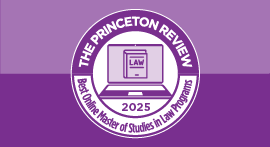As unfamiliar as the case method will be to most 1Ls, the real source of anxiety is the way the professor presents it. Simply put, Socratic instruction entails directed questioning and limited lecturing. There are law professors who are alleged to have gone an entire semester without uttering a declarative statement. Though the Socratic Method has passed out of vogue in the last decade, it remains a common instruction style in many law schools. The case method already places a dizzying burden on a 1L, but when combined with the Socratic Method, it leaves many feeling helpless.

How the Socratic Method Works
Generally, the Socratic professor invites a student to attempt a cogent summary of a case assigned for that day's class. Regardless of the accuracy and thoroughness of the student's initial response, he or she is then grilled on details overlooked or issues unresolved. A professor will often manipulate the facts of the actual case at hand into a hypothetical case that may or may not have demanded a different decision by the court.
At its best, this approach forces a reasonably well-prepared student to go beyond the immediately apparent issues in a given case to consider its broader implications. The dialogue between the effective Socratic instructor and his victim-of-the-moment will also force non-participating students to question their underlying assumptions of the case under discussion. It also hones the law student's critical reasoning skills and prepares her to litigate before tough judges.
At its worst, the Socratic Method subjects an unprepared student to ruthless scrutiny and fosters an unhealthy adversarial relationship between an instructor and his students.
Practice for the LSAT
Take a LSAT practice test with us under the same conditions as the real thing. You'll get a personalized score report highlighting your strengths and areas of improvement.
Explore Graduate Programs for You
Explore our featured graduate schools & programs to find those that both match your interests and are looking for students like you.
Best Online JD Programs
Online JD programs offer flexibility, affordability, access to innovative technologies, students from a diversity of career backgrounds, and global opportunities.
Best Online MSL Programs
Master of Studies in Law (MSL) programs are for non-lawyers whose careers in their organizations will benefit from legal training even though they are not required to be practicing attorneys.

Find MBA Programs Matched to Your Interests
Explore our featured business schools to find those that are looking for students like you.


